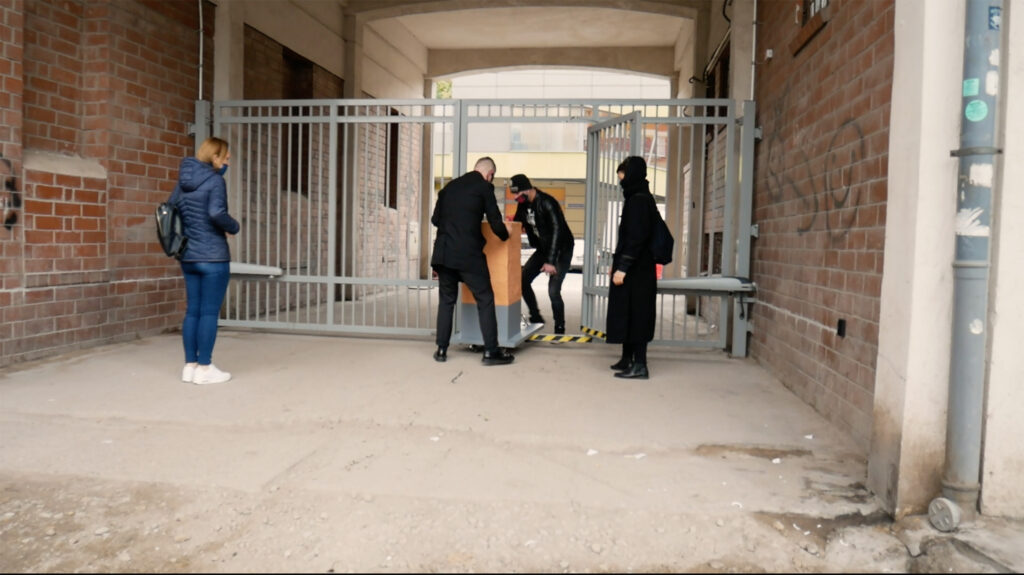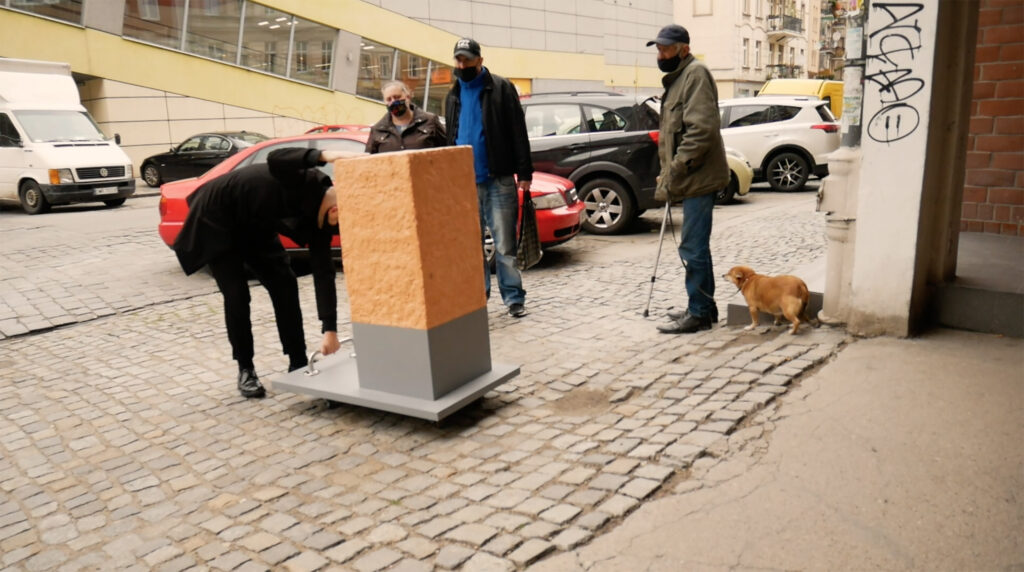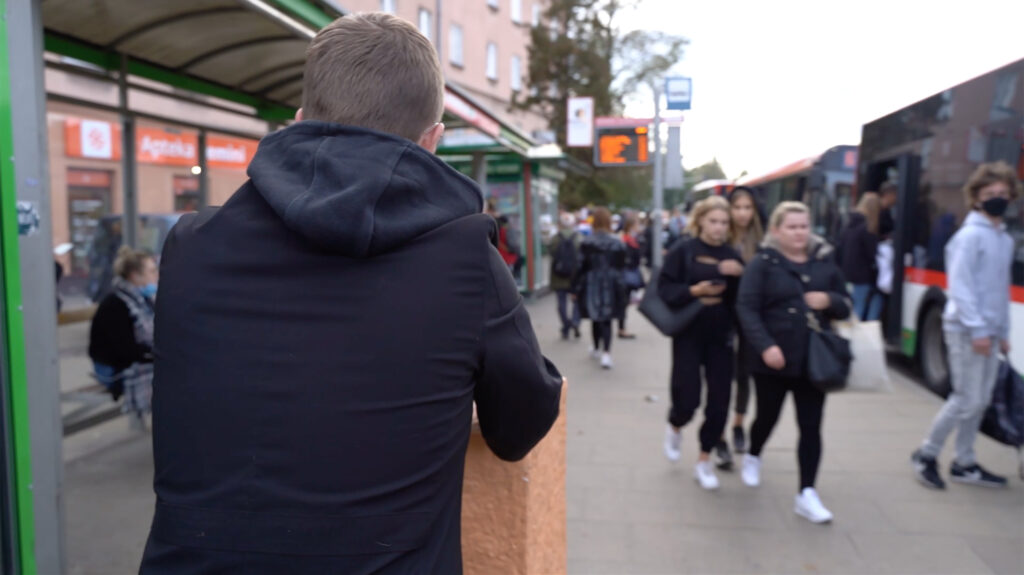Monument to the Victims of Biopower
performance, object (plasticine, plywood, MFP board, acrylic, wheels, handle)
2020-…
“The Monument to the Victims of Biopower” is a mobile and universal object that commemorates forgotten and often invisible individuals who experienced violence in a normalised society. Anyone can fall victim to biopower – in the political, social, and capitalist context. What the monument commemorates is not only the distant past, but also the close past, and even the present.
—
The Fight for Visibility and Contemporary Biopower
The “Monument to the Victims of Biopower” by Daniel Kotowski has an interventional character – it appears where it is needed to make forgetting difficult.
Its first stop was the former hospital at Poniatowskiego Street in Wrocław, a symbolic place where forced sterilisation procedures were carried out under the legislation of the Third Reich. The idea of “race hygiene” was quite popular – by the end of the war, similar solutions appeared in the United States, Canada, Japan, the Baltic and Scandinavian countries.
There were hardly any voices of indignation. As Joanna Ostrowska and Kamila Uzarczyk claim in the book “My Führer! Victims of forced sterilisation in Lower Silesia in 1934–44” (PL: “Mój Führerze! Ofiary przymusowej sterylizacji na Dolnym Śląsku w latach 1934–44”), after Zygmunt Bauman: “Fed by the vision of inevitable biological degeneration for years, ‘ordinary Germans’ did not question the policy of disciplining procreation in the name of collective interests, so the programme of eliminating people considered ‘of little value’ did not arouse massive opposition. In the wide group of beneficiaries of the system, taking advantage from marriage loans and child benefits, the ‘gardening’ passion of the authorities to separate the useful elements, so that they could live and develop, from the harmful and unnecessary, which must be eradicated, could even be fully understood.
People were sterilised because of mental and hereditary illnesses, disabilities, depression, alcoholism, or low intelligence. Often these were highly discretionary decisions to biologically discipline those who did not fit and appeared to be undesirable. A denunciation could decide someone’s fate, and the actions themselves were associated with social stigmatisation.
Daniel Kotowski calls himself “an indicator of incompleteness”. “Incompleteness” is a term imposed from the outside by those who are “complete”. The artist uses it to expose today’s practice of dividing citizens into better and worse categories. Following the concept of Michel Foucault, biopower, a modern way of controlling life, is now performed in velvet gloves, but that does not mean that it is not there. Decorating people’s lives can take the form of a more or less subtle indication of who we don’t want to see in it – people with disabilities, queers or migrants. Violence understood in this way, which melts into everyday life, can take on many faces – from plans to build a wall on the border to the absence of sign interpreters in various public situations essential for social life. “Defective” biographies are pushed out of the field of visibility.
Lublin became the second visiting point of the monument. The artist embarked with his work following the equality march route, refusing to accept homophobia and hatred. The work is covered with hundreds of fingerprints – of people who decided to push the monument along a part of the route with him. The exhibition is accompanied by slogans pointing to modern control mechanisms. It reminds us that each and every one of us can fall victim to biopower, that is, the entire system of subjugating the individual in a given model of functioning. The Monument to the Victims, deprived of dates, warns against the practice of exclusion, which did not end with the end of World War II. It points to the continuum of practises we are dealing with nowadays. The remedy for this situation is solidarity and indifference on the part of the so-called ordinary people who constitute the silent majority and usually unknowingly exercise the greatest power.
text by Sylwia Hejno for Galeria Labyrint
creating object: Daniel Kotowski, Yuriy Biley, Magdalena Kreis
Implemented as part of the “Złoty kiosk 70/20” project organised by the Wrocław Culture Zone and the ZŁOTY KIOSK group with the support of the Ministry of Culture and National Heritage.
video frames (1–3 and 5–6)
photo credit Marta Sobala (4) and Diana Kołczewska (7)






